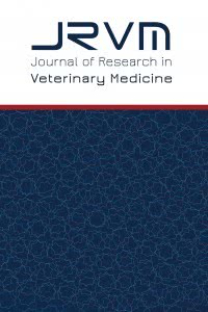ÖRTME FAKTÖRÜ VE GÖZENEKLİLİK PARAMETRELERİNİN DOKUMA KUMAŞLARIN SES YUTUCULUK DAVRANIŞINA ETKİLERİNİN İNCELENMESİ
Örtme faktörü, Dokuma kumaş, Ses yutuculuk
An Investigation of the Effects of Cover Factor and Porosity Parameters on the Sound Absorption Behavior of Woven Fabrics
Cover factor, Woven fabric, Sound absorption,
___
- 1. Barburski, M., Blaszczak, J. R., ve Pawliczak, Z. (2019) Influence of designs of weaves on acoustic attenuation of fabrics. Journal of Industrial Textiles, 49(1), 33–45. https://doi.org/10.1177/1528083718769945
- 2. Çevre ve Şehircilik Bakanlığı. (2012) Gürültünün insan sağlığı üzerine etkileri. Erişim Tarihi: 23.08.2012, http://gurultu.cevreorman.gov.tr/gurultu/AnaSayfa/gurultu/sagliketkileri.aspx?sflang=tr
- 3. Coates, M., ve Kierzkowski, M. (2002) Acoustic textiles - Lighter, thinner and more sound-absorbent. Technical Textiles International, 11(7), 15–18.
- 4. Cox, T. J., ve D’Antonio, P. (2005) Acoustic Absorbers And Diffusers: Theory, Design and Application. Spon Press, Taylor & Francis Group, New York.
- 5. Demirkale, S. Y. (2007) Çevre ve Yapı Akustiği Mimarlar ve Mühendisler İçin El Kitabı, Birsen Yayınevi, İstanbul.
- 6. Genis, A. V, Kostyleva, E. Y., ve Kostylev, V. A. (1990) Sound-absorbing properties of fibrous materials prepared by the aerodynamic method. Fibre Chemistry, 21(5), 389–392. https://doi.org/10.1007/BF00557035
- 7. Işıkel, K. (2006) Endüstri tesislerinde gürültü kontrolü ve uygulamaları. Tesisat Mühendisligi Dergisi, 91, 69–73.
- 8. Lee, Y. E., ve Joo, C. W. (2004) Sound absorption properties of thermally bonded nonwovens based on composing fibers and production parameters. Journal of Applied Polymer Science, 92(4), 2295–2302. https://doi.org/10.1002/app.20143
- 9. Lee, Y., ve Joo, C. (2003) Sound absorption properties of recycled polyester fibrous assembly absorbers. Autex Research Journal, 3(2), 78–84.
- 10. Morton, W. E., ve Hearle, J. W. S. (2008) Physical Properties of Textile Fibres, Woodhead Publishing Limited, Cambridge. https://doi.org/10.1533/9781845694425
- 11. Na, Y., Lancaster, J., Casali, J., ve Cho, G. (2007) Sound absorption coefficients of micro-fiber fabrics by reverberation room method. Textile Research Journal, 77(5), 330–335. https://doi.org/10.1177/0040517507078743
- 12. Peirce, F. T. (1937) 5—The geometry of cloth structure. Journal of the Textile Institute Transactions, 28(3), T45–T96. https://doi.org/10.1080/19447023708658809
- 13. Rettinger, M. (1968) Acoustics: Room Design and Noise Control, Chemical Publishing Co. Inc., New York.
- 14. Segura-Alcaraz, P., Segura-Alcaraz, J., Montava, I., ve Bonet-Aracil, M. (2019) The effect of the combination of multiple woven fabric and nonwoven on acoustic absorption. Journal of Industrial Textiles. https://doi.org/10.1177/1528083719858771
- 15. Soltani, P., ve Zarrebini, M. (2013) Acoustic performance of woven fabrics in relation to structural parameters and air permeability. Journal of the Textile Institute, 104(9), 1011–1016. https://doi.org/10.1080/00405000.2013.771427
- 16. Soltani, P., ve Zerrebini, M. (2012) The analysis of acoustical characteristics and sound absorption coefficient of woven fabrics. Textile Research Journal, 82(9), 875–882. https://doi.org/10.1177/0040517511402121
- 17. Suvari, F., ve Dulek, Y. (2019) Investigating the effect of raising on the sound absorption behavior of polyester woven fabrics. Textile Research Journal, 89(23–24), 5119–5129. https://doi.org/10.1177/0040517519848161
- 18. Suvari, F., Ulcay, Y., ve Pourdeyhimi, B. (2016) Sound absorption analysis of thermally bonded high-loft nonwovens. Textile Research Journal, 86(8), 837–847. https://doi.org/10.1177/0040517515590412
- 19. Suvari, F., Ulcay, Y., ve Pourdeyhimi, B. (2019) Influence of sea polymer removal on sound absorption behavior of islands-in-the-sea spunbonded nonwovens. Textile Research Journal, 89(12), 2444–2455. https://doi.org/10.1177/0040517518797332
- 20. Teli, M. D., Pal, A., ve Roy, D. (2007) Efficacy of nonwoven materials as sound insulator. Indian Journal of Fibre and Textile Research, 32(2), 202–206.
- ISSN: 2148-4147
- Yayın Aralığı: 3
- Başlangıç: 2002
- Yayıncı: BURSA ULUDAĞ ÜNİVERSİTESİ > MÜHENDİSLİK FAKÜLTESİ
YAPI ÜRETİMİNDE EKLEMELİ İMALAT TEKNOLOJİLERİNİN KARŞILAŞTIRMALI DEĞERLENDİRMESİ
Cemal İrfan ÇALIŞKAN, Ümit ARPACIOĞLU
Ahmet Raif BOĞA, Mustafa KOÇER, Murat ÖZTÜRK
Burak ÖZŞAHİN, Abdurrahman GÜNER
Nurcan ÖZTÜRK, Hasan Basri ŞENTÜRK, Ali GÜNDOĞDU, Celal DURAN
Karıştırma Koşullarının Polimer Modifiye Bitümün Özellikleri Üzerindeki Etkileri: Genel Bir Bakış
Derya KAYA ÖZDEMİR, Ali TOPAL, Burak ŞENGÖZ
LASTİK JANT BİRLEŞTİRME OPERASYONU İÇİN DIŞ KAYNAK KULLANIM KARARI BENZETİM MODELİ
M1 Kategorisi Araçlar İçin Geliştirilen İkinci Sıra Yolcu Koltuğu Karkasının Yapısal Güçlendirilmesi
OTOMOTİVDE KULLANILAN ELYAFLI MALZEMELERİN AKUSTİK ÖZELLİKLERİNİN İNCELENMESİ
